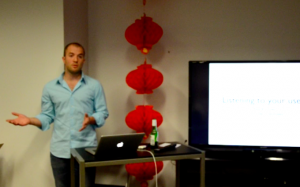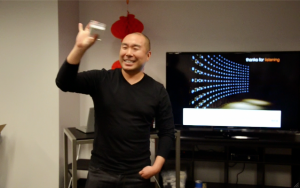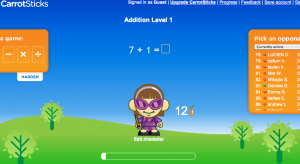Listening to Your Users
In theory we all know that we should listen to our users… but how do you listen to users when you don’t have any? And how do you filter out the chatter of early adopters from critical information? At our Thursday workshop, Jae Chung, founder of goBalto gave 7 suggestions on how to effectively listen, and Pete Koomen, co-founder and President of Optimizely, shared lessons and provided examples of how to listen to non-existent users and survey with actionable results.
7 Ways to be an Effective Listener
- Stop thinking of yourself as the expert: Break the curse of thinking you are right and listen to your users instead.
- Step outside your building: Everything you are planning in-house without input from users are just GUESSES. Find the real evidence from talking to users.
- Just say no to new features: Only when your users are loud and numerous about one particular feature should you add it. Wait until you can’t ignore them.
- Ask why 5 times: When you do decide to change a feature, get to the core motivation. Don’t stop at one why; go all the way fifth why.
- Must Have or Nice to have? Is your product or new add something that is nice to have or the must have item? Use this analytic to prioritize new features.
- Prioritize by type of user (pre or post-chasm) Using Geoffrey Moore’s technology life cycle, try to figure out what types of things you should listen to at different stages. This helps prioritize tasks like when to add a new feature or develop stronger customer service .
- Watch your Users– Listen by watching or taping users as they work with your product. Actions speak louder than words.
User lessons with Pete Koomen

Lesson 1: Kids don’t like math problems. Pete’s first startup was Carrotsticks, a game to incentivize kids to practice math and track their progress. After a few months of building the product, they tested it and found something they didn’t expect: kids just don’t like doing math problems! At that point they started to observe how kids play the game and realized they loved to interact with each other more than math. Based on their discovery, they added social components like personalized androids and competition. It worked, and the kids loved the game enough to skip recess.
Lesson 2: Get users to pay before. After his first project, he started listening to users even before they started building the product. In fact, he decided they needed to find people who would actually pay for the product before they spent resources building it. Pete suggests to find at least 10 people who would actually be willing to pay for your product before you pull the trigger and prototype.
Lesson 3: Actionable testing. Once you have users it is important to listen to quantifiable measurements. To make this easy for developers, Pete created Optimizely, a platform that enables you to test different versions of your websites to see which versions is more effective. It does this by presenting different forms of active websites to users and then delivers results as to how users interact with each version to the developers. Other helpful analytic websites include: Google Analytics and Mixpanel.
You can watch the workshop on our Vimeo channel.

